




FARMERS ARE throwing down the gauntlet to politicians – hold an independent inquiry into rural bank lending or face tough questions from the farming sector.
Federated Farmers national board member Richard McIntyre says the farmer lobby is continuing to push for an independent inquiry into rural banking on behalf of our members, but whether that will go ahead is ultimately up to Parliament.
“We’ve done the best job we can to highlight the issue and lay out a compelling case for politicians to take a deeper look at the topic, but we know the banks are pushing back strongly,” he told Rural News
“This is a serious issue for farmers and adds a lot of cost to their businesses at a time when farming families are really doing it tough.
“Concerns about banks and interest rates are consistently coming out top of the list in our farmer confidence surveys. If the Government doesn’t go ahead with this inquiry there are going to be some tough questions asked of them by farmers – and I’m not sure they’d have very good answers to offer.”
In a 30-page submission to the primary production select committee, Federated Farmers is “strongly urging” for a full select committee inquiry.
According to the submission, the banks claim Reserve Bank requirements would result in a 0.5% and 1.2% increase in interest rates. Federated Farmers says in a rural lending


context, with total rural lending of approximately $62 billion, this equates to an additional cost of $310 million to $720m per annum of interest.
It claims this makes it higher than the cost forecast for the He Waka Eke Noa policy, the primary sector partnership to reduce emissions: HWEN policy was forecast to levy $220 to $290 million from the sector by 2030.
The seven-member primary production select committee is chaired by Mark Cameron, ACT. He was on personal leave last week and couldn’t comment. National has three mem-
bers, Labour two and Greens one. The select committee will make a recommendation to Parliament.
A concern among farmers is that Parliament will back a general inquiry into banking.
McIntyre says that there is a very real risk that if there is a general inquiry into banking, the issues that are incredibly important for farmers and rural communities will be overlooked.
“We can’t afford to have these issues lost, or buried, under a pile of concerns about general business lend-
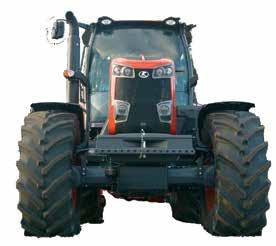
ing, urban mortgages and that sort of thing. Farmers have been asking some fair questions for a long time now, and Federated Farmers are determined to get them some answers.”
McIntyre says the Feds submission makes a compelling case for an inquiry.
“This is a once in a generation opportunity for us to take a really close look at how our rural banking system is operating – from the Reserve Bank right through to the farmer experience.
“Farmer confidence is at an alltime low, and banking issues are showing up in our surveys as the leading
driver – even ahead of regulatory issues and compliance.
“If we can address some of those banking related drivers, I’d hope to see a lift in farmer confidence.
“To give just a few numbers, Federated Farmers banking survey shows the number of farmers satisfied with their banking relationship has nosedived from 80% just a few years ago, to just 55% now.
“Similarly, the proportion of famers feeling under pressure by their banks has gone from one in 20 in 2015, to one in four today.”

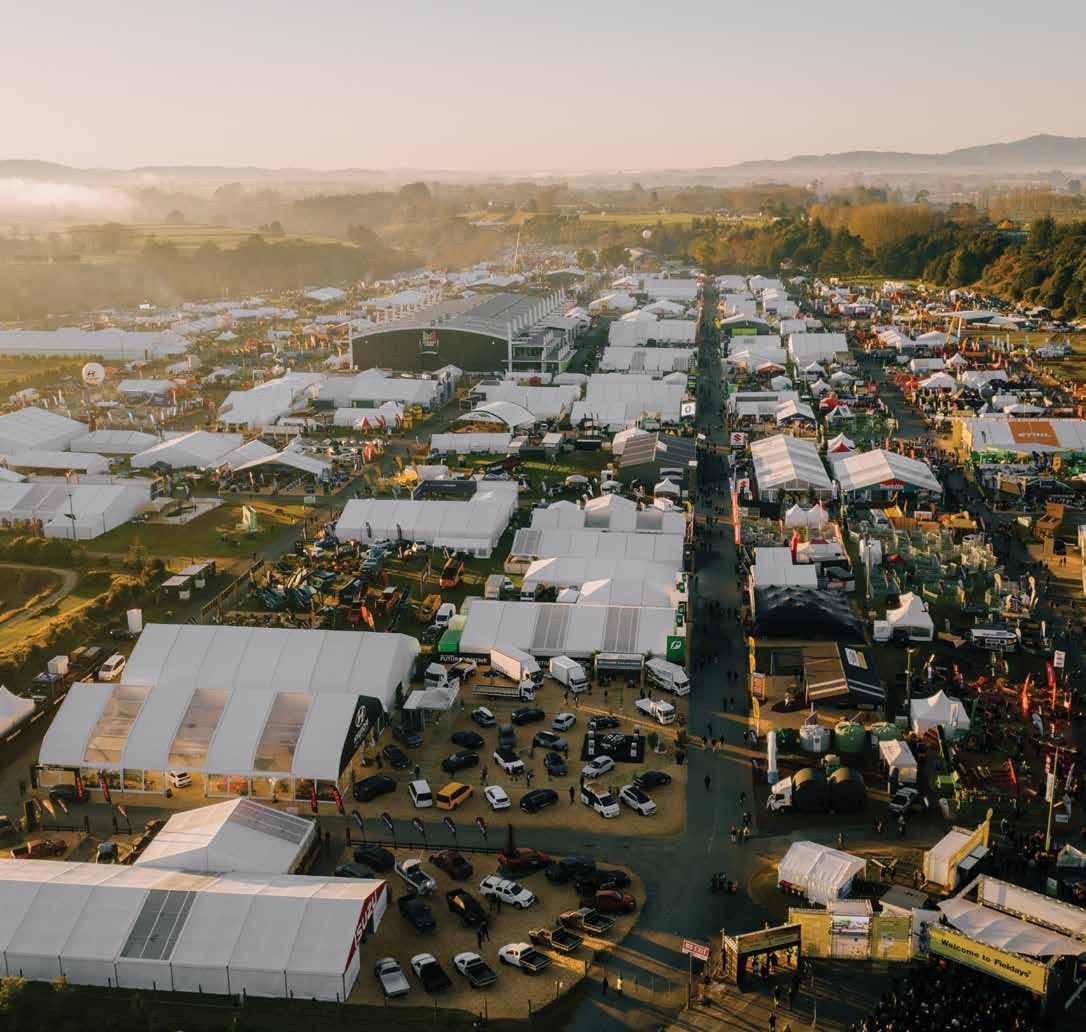
1-9
10-11
12
12
12-13
14-15
16
17-18
19
HEAD OFFICE
Lower Ground Floor, 29 Northcroft Street, Takapuna, Auckland 0622
Phone: 09-307 0399
Fax: 09-307 0122
POSTAL ADDRESS
PO Box 331100, Takapuna, Auckland 0740
Published by: Rural News Group
Printed by: Inkwise NZ Ltd
CONTACTS
Editorial:
editor@ruralnews.co.nz
Advertising material: davef@ruralnews.co.nz
Rural News online: www.ruralnews.co.nz
Subscriptions: subsrndn@ruralnews.co.nz
AFTER A decade of consultation and court battles, Environment Southland has officially adopted a plan to prevent further decline in the region’s water quality.
However, for most farmers in the region the milestone has passed without much attention.
Federated Farmers Southland spokesperson Bernadette Hunt says the rules in the Southland Water and Land Plan are largely assumed to have been operative already – and in many cases they are.
“There are so many different regulatory processes underway at the moment that most farmers have understandably lost track, and many have lost interest,” she told Rural News
The plan adopted the approach that land and water should be managed in a holistic way, recognising the connectiv-

ity between surface and groundwater, and between freshwater, land and the coast. The plan also introduced new rules for activities like intensive winter grazing, stock access to waterways and land use intensification.
WELL-KNOWN SCIENTIST Jock
Allison has passed away.
The 80-year-old, a former head of the Invermay Research Centre near Dunedin, was laid to rest last Friday. Allison passed away at Dunedin Hospital.
AgResearch says Allison was a huge contributor to the organisation, to the agriculture sector and to NZ as a whole.
“Quite rightly, that contribution will now be celebrated.”
In 2000 Allison received the NZ Society of Animal Production’s Sir Arthur Ward Award and was made an Officer of the NZ Order of Merit for services to agriculture.
In 2003 he received the Bledisloe Medal for distinguished contributions to NZ’s land-based industries.
Allison is survived by his wife Hilary and daughters Katherine and Amy.
Hunt believes the adoption of the plan this month will have little impact as most farmers already consider them to be the rules.
She notes that plan has been unfolding for around 10 years now since the


initial pre-consultation work, is incredibly large and complex, and has wide ranging ramifications.
“However, by and large these have already been implemented across the province and are already considered to be the rules by most,” she says.
“The plan was intended to be a first step to ‘hold the line’ on water quality while limit setting processes were developed. In reality, and because of the long and drawn-out process involved, it goes much further than that.”
Hunt, who has led the Federated Farmers’ charge on environment issues in the region, believes that all parties recognise that the plan isn’t perfect.
“It was always intended to be a first step in the process, but took way longer than anyone expected and has had a lot of legal input, which doesn’t necessarily equate to practical outcomes.
“But it has been through a very long and tedious process of submissions, hearings and court, and the most impractical provisions have been addressed.”
Environment Southland chairman Nicol Horrell said this decision marks the culmination of nearly ten years’ work, six of which have been in the Environment Court working through the resolution of parties’ appeals.
“This plan is the product of a robust process over many years and is underpinned by Southland-specific science presented by all parties.
“While this has been a long process, it’s produced a plan that is tailored for Southland and has involved many parties and individuals who have an interest in Southland’s environment.
“Individuals from the community to major stakeholders, industry bodies and other councils have had their say, and this level of engagement provides real benefits for the region.”
Horrell says the plan, along with the on-farm and community actions it requires, provides a robust, foundation for continuing to develop a Southland solution to its water quality challenges.
“It is tailored to our region and our communities.”
9000L - 27300L

and contractors.

THE LOBBY group the Methane Science Accord (MSA) says it welcomes a recent government move to seek outside advice on reducing biological methane targets, rather than relying on recommendations made by the Climate Change Commission.
MSA says it will be “very actively involved in this initiative”. The group says it has outlined its position on the topic and what it will use to lobby government, argue before the Primary Industry Select Committee and in the media – “the few that publish our findings.”
In a recent newsletter to supporters, the group outlined its five-point summary of its position on methane targets, claiming that ruminant methane is too miniscule and insignificant
to tax or curtail.
It also argues that Article 2 (b) of the 2015 Paris Agreement requires countries to avoid measures that “threaten” food production.
“New Zealand has the lowest socalled carbon footprint of any food producing nation by a margin of 40% indicating ‘leakage’ would occur if New Zealand’s food production were reduced.
“The MSA also asserts there is no need for any action against ruminant methane and points out to those who demand taxing, that these measures relocate a source of emissions from one country to another.”
MSA is also calling on the Government to join with Federated Farmers and industry bodies to urgently build an international constituency to counter any moves to tax or curtail rumi-
The Methane Science Accord is an agreement between Groundswell, F.A.R.M., 50 Shades of Green and the Rural Advocacy Network. It claims to have a membership of more than 100,000 farmers and supporters.
nant methane.
“Such a constituency would be with countries where ruminant methane emissions are high and developing countries who are building an agricultural industry based on ruminants.
“In New Zealand, ruminant methane emissions peaked in 2005 and have fallen slightly since, according to the Ministry for the Environment.
“The relative insignificance of rumi-
nant methane emissions means any proposals to tax or curtail them must be a political action – not a sciencebased decision.”
MSA argues that there is no basis for taking restrictive action against ruminant methane and curtailing production in one country and having that production occur in another country with a much higher carbon footprint.
“An abiding concern of all climate policy is to avoid measures that relocate a source of emissions from one country to another but do nothing to reduce total emissions. This is called carbon leakage.”
It adds that around 95% of the milk produced in New Zealand is processed for export. “The global volume of those markets is determined by aggregate demand, and any reductions by one supplier will be quickly replaced by
another supplier.”
The group maintains that ‘leakage’ of NZ’s dairy production would not only be bad for New Zealand but also a disaster for the Paris Agreement.
“That is because New Zealand’s farm production has the lowest carbon footprint in the world – less than half the international average. If a tonne of butter processed here was produced in Germany instead, the associated methane emissions would double.”
MSA also takes issue with claims made by some exporters and commentators who say there will be market retaliation if NZ doesn’t act on methane.
“Who could possibly justify taking action against New Zealand farmers who have the lowest carbon footprint by a huge 40% margin of any food producing nation?”
sudeshk@ruralnews.co.nz
FONTERRA SAYS the sale of its global consumer business and its Oceania and Sri Lankan operations could take 18 months to complete.
Businesses on the chopping block used 15% of the co-operative’s total milksolids and represented 19% of the group operating earnings in the first half of FY24. It also includes Fonterra’s iconic Anchor, Mainland and brands. The co-op says it will seek farmer shareholder support for the sale.
Fonterra chairman Peter McBride says this is a significant move for the co-op which will set
it up to grow long-term value for farmer shareholders and unit holders.
“We have conducted a strategic review which has reinforced the role of our core business.
This is working alongside farmers to collect a sustainable supply of milk and efficiently manufacture products valued by customers, to deliver strong returns to farmer shareholders and unit holders,” says McBride.
Chief executive Miles Hurrell says the review has also given the co-op confidence in the role it plays in the dairy nutrition value chain, with one of its greatest strengths being the production of world-class, innovative ingredients
for customers to take to consumers.
“We believe we can grow further value for the co-op by focusing on being a B2B dairy nutrition provider, working closely with customers through our high-performing Ingredients and Foodservice channels.
“This will be enabled by strong relationships with farmers, a flexible manufacturing and supply chain footprint, deeper partnerships with strategic ingredients customers, further investment in our Foodservice channel, continued delivery on our sustainability commitments and investment in innovation.
“In this context, we
are exploring divestment options for our global Consumer business as well as our integrated businesses Fonterra Oceania and Fonterra Sri Lanka,” says Hurrell.
Fonterra’s global Consumer business has grown over the years since Fonterra was formed and is performing well. It includes a portfolio of market leading brands such as Anchor, Mainland, Kāpiti, Anlene, Anmum, Fernleaf, Western Star, Perfect Italiano and others.
Fonterra Oceania is a fully integrated business, recently created through merging Fonterra Brands New Zealand and Fonterra Australia. It com-

prises Consumer, Foodservice and Ingredients businesses. Fonterra Sri Lanka comprises Consumer and Foodservice businesses.
Hurrell says selling these assets would help create a simpler, higher performing co-op focused on its core Ingredients and Foodservice business and “doing what we do best”.
“While these are great businesses with recent strengthening in performance and potential for more, ownership of these businesses is not required to fulfil Fonterra’s core function of collecting, processing and selling milk.
“Due to our co-operative structure, we believe
prioritising our Ingredients and Foodservice chan nels and releasing capital in our Con sumer and associated businesses would gen erate more value.”
He says Fon terra also received “unsolicited interest in parts of these businesses, making now a good time to consider their ownership”.
Fonterra chair Peter McBride



THE MINISTRY for the Environment (MfE) has found itself in a stoush with NZPork over the controversial National Policy Statement for Highly Productive Land (NPS-HPL).
The NPS-HPL aims to ensure the availability of favourable soil for food production while more land is opened up for housing projects.
Last week, pork farmers accused MfE, along with local councils, of misinterpreting the policy statement, leading to the exclusion of pig farms from land suitable for agriculture.
NZPork chief executive Brent Kleiss says it has been led to believe that the MfE is saying land impacted by the policy should only be for certain types of farming and pig farming is not one of those.
“This interpretation of the policy will make it hard for new pig farms to be established and for existing farms to grow or change the way they do things,” Kleiss says.
He says pig farms are often part of bigger farms where pig manure is used

as a natural fertiliser on cropping and pastoral land.
“This is why many pig farms are on land that’s considered good for farming under the policy,” he says.
Kleiss says NZPork has asked the Government to change its policy to ensure it protects good farming land while allowing for pig farming.
He says consultation on the proposed NPS-HPL stated the intention to protect highly productive land for ‘primary production purposes’ in an effort to avoid the loss of highly productive land to uncoordinated urban expansion and rural land fragmentation.
“NZPork supported that,” he says. “However, the published version of the statement changed
that wording to ‘landbased primary production’.”
Kleiss says this is being interpreted by MfE staff to mean that despite being a primary production food-producing activity, indoor primary production activities like pig farms are an inappropriate land use on highly productive land.
“We are also seeing this interpretation from councils as they begin to implement the NPS-HPL.
“We believe the current interpretation of the policy is inconsistent with its original intent of protecting highly productive land for primary production and represents an overreach in a policy initially proposed to protect land valued for food production from urban activities.”
MfE says the Govern-
ment has committed to reducing consenting barriers for infrastructure, housing and primary production.
“This includes MfE exploring options to amend the NPS-HPL to enable more flexibility of what activities can occur where,” a spokesperson told Rural News
The spokesperson says officials have reviewed submissions from consultation last year on two potential amendments to the NPS-HPL.
“These related to the development of new specified infrastructure: renewable energy generation, intensive indoor primary production such as pig farming and greenhouses on HPL.
“Ministers will seek a Cabinet decision on these potential changes later this year.”
AGRIZERONZ, THE joint venture (JV) fast-tracking emissions reduction tools for Kiwi farmers, is looking to speed up delivery of a methane vaccine with a $10m investment in US ag-biotech start-up, ArkeaBio.
It is half owned by the New Zealand Government, with the other 50% owned by the a2 Milk Company, ANZ Bank New Zealand, ANZCO Foods, ASB Bank, Fonterra, Rabobank, Ravensdown, Silver Fern Farms and Synlait.
These shareholders are providing $183 million for AgriZeroNZ to achieve its ambition. The investment will be used to accelerate the US company’s development of a methane vaccine for ruminant animals, with an initial focus on cattle.
It’s the second investment in vaccine development, the JV having already invested in the New Zealand research programme, and AgriZeroNZ chief executive Wayne McNee says the backing of two vaccine projects should increase the chance of delivering a sought-after, world-first solution.
“A methane vaccine for ruminant animals is internationally recognised as the ‘holy grail’ to deliver methane reduction at low cost and mass scale. It could be one of the best long-term options to really shift the dial on agricultural emissions in New Zealand without compromising farm profitability, as well as a powerful tool globally.
“It would be a particularly useful tool for our grass-fed animals and a good fit for our pastoral farms, as vaccination is commonly used to support animal health,” says McNee.
Based in Boston, ArkeaBio is led by Kiwi expat Colin South and has recently
completed US$26.5m Series A venture financing to support process development, trial expansion, and defining path to market.
South says they are pleased to have AgriZeroNZ join its second round, which provides both funding and a close relationship with an important and motivated early market for their global solution.
“A vaccine is the lowest-cost path to global scale enteric methane reduction and is applicable to cattle worldwide. This singular solution, distributed globally with large-scale adoption, can change the trajectory of global warming, and demonstrate a path to meeting major climate mitigation goals,” says South.
“The funds raised in this Series A financing will play a pivotal role in expanding the research, development, and deployment of the vaccine, including large-scale field trials and engagement along the supply chain. We look forward to working with AgriZeroNZ and the members of the innovative Kiwi farming environment to make worldleading progress in reducing enteric methane emissions,” he says.
A vaccine would be a critical tool to help farmers achieve AgriZeroNZ’s ambition of reducing agricultural emissions by 30% by 2030. McNee says this is crucial for New Zealand, to meet global customer targets, protect trade agreements and support the country’s climate goals.
“The work to develop a methane vaccine is pioneering, complex and challenging.
“We are proud to be working with two world-leading research teams to support and accelerate their work for farmers in New Zealand and around the globe,” McNee says.
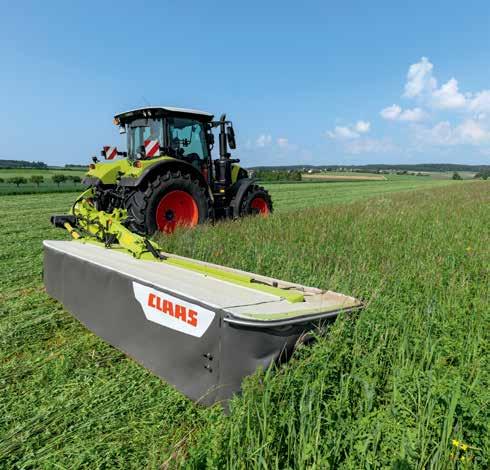




CORONET PEAK, Queenstown, was the venue for the 2024 NZ Dairy Industry Awards.
About 500 farmers and industry leaders and politicians converged for the annual event where the dairy sector’s cream of the crop gets rewarded for their efforts and achievements.
Will Hinton and Kali Rangiawha from Manawatū were named the 2024 New Zealand Share Farmers of the Year, Northland’s Kieran McCahon the 2024 New Zealand Dairy Manager of the Year, and Kirwyn Ellis, Waikato, the 2024 New Zealand Dairy Trainee of the Year. They shared prizes from a pool worth over $200,000.
James and Debbie Stewart, Manawatū, were the recipients of the Fonterra Responsible Dairying Award, while Paul and Sarah Koopal, Central Plateau, won the CowManager cow monitoring system for three years.
Accepting his award, Will Hinton referred to a saying that “On the road to achieving your dreams, you must apply discipline and consistency”.
“Because without commitment, you’ll never start, and without consistency, you’ll never finish,” Hinton said.
Before entering the awards, all the couple dreamed of was being sharemilkers. But the awards process has opened their horizon to farm ownership, with a 10-year plan that holds them accountable to key targets.
“Thank you to NZ Dairy Awards for broadening our horizon,” he said.
Share Farmer category head judge, Michele Cranefield from ANZ, says Will and Kali impressed the judges with the strength of their partnership and in the way they balance each other.
“They are a very good team and one could pick


up where the other left off,” Cranefield says.
“They are impressive with numbers and are extremely passionate about the dairy industry, what they’re doing and how they’re doing it.”
The couple are contract milkers for Tim and Victoria Gorton on their 350-cow, 113ha Halcombe farm.
The Stewart from Dairylands received the John Wilson Memorial Trophy. The award, which received more than 20 nominations across all regions this year, was created to recognise and celebrate dairy farmers who demonstrate leadership in their

TRADE AND Agriculture Minister Todd McClay says the Government is always working to ensure that our food exporters are treated fairly under trade agreements signed with other countries.
Speaking at the NZ Dairy Industry Awards in Queenstown, he highlighted the simmering trade dispute between NZ and Canada over the Comprehensive and Progressive Agreement for Trans-Pacific Partnership (CPTPP).
New Zealand initiated the dispute because Canada was not complying with CPTPP rules, blocking dairy exporters’ access to its market.
A CPTPP arbitration panel ruled decisively in New Zealand’s favour. Canada had until 1 May to change how it administered its tariff rate quotas – to stop giving its own domestic industry priority access, and to allow exporters to benefit fully from the market access negotiated in good faith between Canada and New Zealand.
McClay says NZ takes its trade obligations seriously and expects other countries to do the same.
“Canada is a great friend of NZ, we work together well around the world, but they must deliver on their obligations,” he says. “And on your behalf the government reserves the right to use any instrument at our disposal.”
animal welfare.
The judging panel were amazed by the work done by the Stewarts.
“We were left with one big question following our time with Debbie and James – what more could anyone do to demonstrate the notion of ‘responsible dairying’?” says head panellist Michael Hide.
“Their passion, professionalism and leadership within the industry across all aspects of their business is beyond impressive and only surpassed by their dedication to giving back to their local community.”
DairyNZ chief executive, Campbell Parker, who attended the awards, noted that the winners have a lot in common, including a passion for farming, innovation and positive change.
Parker says the winners are all forwardthinking and contribute strongly to a positive future for New Zealand dairy farming.
“It’s fantastic to see the awards acknowledging top Kiwi dairy farmers and their hard work and dedication at the heart of their communities,” Campbell says.
“These farmers are
future proofing their businesses to remain resilient while continuing to produce sustainable and competitive milk.”
NZDIA Trust chair Paulette Johns told the awards night that it was “unashamedly a celebration”.
“Taking a moment out of everyone’s busy lives to focus on all the positives of dairy. To recognise and appreciate the efforts and achievements of our entrants, regional and national committees, management team, study tour hosts, judges, trustees and of course our valued and crucial sponsors. Knowing what is involved at each of the levels and how much hard work is required, I personally would like to express my deepest gratitude for all that you do.
“As always, this year’s group of finalists have reminded us of why we farm. Their enthusiasm for the future of dairy is infectious. With their can-do attitude and our guidance, we will lean into the constant stream of change and challenge that our industry faces and not only survive but thrive. It is likely many will become tomorrow’s leaders.”
THE MOOD in the deer industry is very positive and on an upwards trajectory.
That’s the view of Deer Industry NZ (DINZ) chair, Mandy Bell following their recent conference in Hawke’s Bay.
Bell – a deer farmer and a veterinarian – says almost half of the oneday conference was taken up discussing opportunities that are opening up for the sector which in the past has had something of a rollercoaster ride.
She told Rural News the 200 people attending the conference wanted to look to the future rather than focus on internal matters. There was much talk about ‘value chains’ and many of the proces-

sors and marketers were at the conference to give some good ‘intel’. Bell says the venison market

FENCING OFF waterways in the hill country is a big issue for members because it is far more costly to erect a deer fence than one for sheep and cattle, says Mandy Bell.
She says a lot of deer farmers are measuring water quality and the result is good water. She questions the need for them spend $35,000 to fence off a couple of small creeks high up in the hills where the deer are not making any impact on water quality.
“Where you have low stocking rates, the water quality is good. It’s important to note that the deer industry has been running a fantastic project involving ten farms over five years with three scientists visiting each of the properties regularly, checking and sampling the water in the streams,” she says.
Bell says DINZ has a very good understanding about deer and water quality.
After the main conference, delegates had the opportunity to visit Rangimoe, a successful and well-established deer farm at Kereru in the western hills behind Hastings.
Owned by the Gaddum family, the property was established by Dick Gaddum, the grandfather of Ru, who runs the farm with his wife Kate. Bell says the property is a wonderful legacy to Dick Gaddum and the extended family.
“Overall, it was a great conference and we are all looking forward to next year, which will be the 50th in the history of the organisation. That event will be held in Queenstown,” she says.
is looking up, with a reasonable split of product going to China, Europe and the US.
“We’re now heading to a situation where there is more demand than supply. The US is where we are well rewarded for our venison.
“That’s when you start talking about value chains and see venison going directly from producers into very specific markets,” she says.
Bell says there was word of some exciting things happening in the velvet space as well as the venison space. She acknowledges there is a problem getting frozen velvet into China at present but says DINZ is working closely with Ministry for Primary Industries (MPI) and the Chinese authorities to get this velvet classified as ‘an agricultural product. If that can be done, access for that product into China will resume.
China imports roughly 60% of our velvet, but half of this is reprocessed there and re-exported to Korea.
Other issues discussed at the conference were genetics, forages, diversification and the environment. Regarding the latter, Bell says there is a mood of greater confidence in the sector with the arrival in office of the new coalition Government and hope that a more pragmatic approach to regulations will be delivered.
“Right from the outset deer farmers have been positive about environmental outcomes on their farms. Fresh water is important, greenhouse gases are important, but there is need for pragmatism because a lot of good work is being done by our farmers,” she says.


THE MOOD in horticulture is cautiously optimistic, according to the chair of Horticulture NZ, Barry O’Neil.
He says the growing season is much better than the previous couple of years and most sectors have produced a harvest – although in many cases, not as great as it was in past years. He says they don’t have a shortage of labour as they did in past seasons, but it’s more expensive.
O’Neil says it is great to be able to have a harvest and have the market crying out for the products.
“The other positive thing is around the economy and the trade focus, with the government opening markets and taking away trade barriers. Infrastructure is still an issue with improvements needed with roads and ports to enable the sector to operate more efficiently,” he says.
In terms of the recovery from Cyclone Gabri-

elle and other adverse weather conditions, Barry O’Neil says for most growers, things have improved. He says kumara growers in Northland had a good season and while yields are slightly down, kumara are now back in shops and at a reasonable price.
O’Neil says in Hawke’s
Bay, while apple production is down, the fruit quality is fantastic and trees that initially looked like they may die because of the cyclone have produced fruit.
“Some of the kiwifruit growers in Gisborne didn’t fare so well when some of the vines started to collapse because of
the cyclone damage. In some orchards up to 30 per cent of vines died or needed to be replaced,” he says.
O’Neil says most orchardists will be able to produce a crop of some sort this year and they’ll be able to pay the bills associated with producing this year’s crop. But the debt from the damaged caused by Cyclone Gabrielle will still be with them.

BARRY O’NEIL says the sector is delighted by the fact that it’s been properly recognised with the appointment of an Associate Minister of Agriculture with special responsibility for horticulture.
He says this is a great initiative and something they have wanted for some time. O’Neil says while Nicola Grigg is still on maternity leave and won’t be back in Parliament until June, she is still doing a lot of work from home and the industry is looking forward to working with her when she resumes full duties.
“I think a key issue is that the previous government had so many changes on the go at once, it was overwhelming. Whereas
this government is saying let’s take a pause and work out what we need to do, and how can we leverage off existing industry schemes without having to reinvent the wheel,” he says.
O’Neil says it’s very encouraging to see the government is warming to the idea of using existing and well-proven quality assurance programmes such as NZ GAP, rather than trying to put in their own programmes which duplicate what is already being done.
He says while there is a lot more policy work to be done by government, the hort sector is encouraged by the fact that government is prepared to listen.
FOR THE past month, HortNZ has held a series of meetings around the country in preparation for a grower vote on whether to retain the levy they pay on their produce to fund the body.
Other ‘industry good’ organisations such as DairyNZ and Beef+Lamb NZ go through the same process.
Barry O’Neil says, from May 14 to June 14, growers can vote on a proposal put forward by HortNZ which has considered the feedback from the earlier meetings.
“The priorities that members have indicated they want us to focus on are: water – allocation and storage; climate – both mitigation and adaptation; and finally a catchall of food security and social licence to grow. Those are the three keys areas,” he says.
O’Neil says these will be aligned to the Horticulture Action plans which has a focus on growing sustainably, optimising value for growers, making Māori strong in horticulture and making sure that everything done in the horticulture space is underpinned by good science and knowledge. He says the proposal being put forward is practical common sense and is aimed at delivering positive outcomes for growers.







PLANS ARE in place to celebrate the 100th anniversary of the legendary Flock House opening its doors for the first time.
But the chances of anyone who attended this iconic training establishment, setting foot on its hallowed turf as part of the celebrations, seem problematic. Alasdair Bettles-Hall, whose father Victor came to Flock House in 1929, is organising the centenary event which will take place on the weekend of July 21/22.
Flock House owes it origins to New Zealand wool growers who in the days of WW1 agreed to a deal with the government of the day to buy their wool and later on-sell it. In the end, the government made money on this but offered the profit of £237,000 back to the growers.
They felt embarrassed by this and in the end decided to put the money into a fund to help the orphaned sons and daughters of Royal Navy, merchant navy and fishermen who lost their lives in the war. This was basically in recognition of the
navy personnel who took their wool to market or protected the ships that did.
The wool growers purchased the Flock House estate and it was converted into a training institute for the orphans to learn farming skills. Between 1924 and 1931, about 750 went to Flock House. In 1937 the government bought the establishment and it then offered cadet training in farming to all New Zealanders. It was also used as a conference centre.
One of Flock House’s most famous principals was J.J. Stewart who coached the All Blacks.
In 1988 it was closed and is now in private hands.
What Bettles-Hall is hoping to do is to try and trace down descendants of the early orphan residents of Flock House.
“This is proving a wee bit harder that we initially envisaged, and we think this project may run from between three and five years. The other object is to celebrate the 100 centenary, and that is open to not only the original descendants but the approximately 2500 trainees who went through
THE DAIRY and red meat sectors have welcomed news that New Zealand will begin formal negotiations for a free trade agreement (FTA) with the United Arab Emirates (UAE).
The announcement by Trade Minister Todd McClay and his counterpart UAE Trade Minister Dr Thani bin Ahmed Al Zeyoudi in Dubai follows an earlier meeting in March where the pair set up a consultation programme to see if such a deal should proceed.
The UAE is an important market for NZ’s red meat sector, generating $47 million of export earnings in 2023. High-value chilled beef is the most valuable export sub-category to the UAE, worth $31 million in 2023, making the UAE our fourth largest chilled beef market behind the US, China, and Japan.
Meat Industry Association (MIA) chief executive Sirma Karapeeva says a comprehensive FTA with UAE would open the door to reduce tariffs on other products that we export to the Middle East, including frozen beef and lamb, and wool.
Also happy with the news is Dairy Companies of NZ (DCANZ) executive director Kimberly Crewther. She says her sector looks forward to a high-quality FTA agreement that delivers certainty to our dairy exporters of duty-free access across all products.
– Peter Burkethe establishment as farm cadets. It is also open to their instructors and anyone else who has memories of this iconic institution,” he says.
Bettles-Hall has set
up a website www.flockhouse.nz where people can register their interest and in time buy tickets for the centenary events.



Dairy
SLUGGISH DEMAND remains a key driver for dairy commodity prices.
Low prices in late 2023 and early 2024 provided a great opportunity to replenish stocks, and so with full inventory pipelines, buyers are cautious.
Attention is now on seasonal peak milk production in the Northern Hemisphere, and sentiment is shifting in most
regions, with purchasing slower at current price levels.
Rabobank has revised its earlier view on China’s net imports. It now anticipates a decline of 8% in net import demand in 2024 compared to 2023. The combination of stronger milk production and weaker consumer demand are the main drivers.
Global milk supply remains under pressure.
While milk supply growth remains a challenge in most regions, China’s production has been revised upwards for 2024, from 2% to 3.2%.
IT’S A similar tale this month for the beef story, with farmgate prices continuing to track steady.
Cull cows being sent for slaughter were still slower than usual in March, according to the
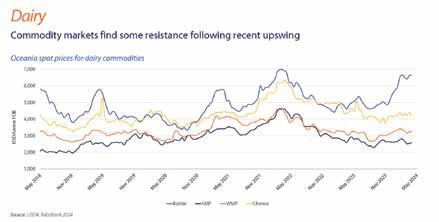

New Zealand Meat Board slaughter data, tracking around 3% behind last March nationally.
Year-to-date, total exports of beef meat from January to March 2024 are up by 5% yearon-year at just over 133,000 tonnes, and up by 3% in value.
In volume terms, shipments to China are down 8% at 51,650 tonnes. The upswing trend to other destinations has continued with exports
to the US now up 14% YTD, Japan up 41%, and Canada up 60% compared to the same period last year.
SLAUGHTER NUMBERS for the kill season nationally are now tracking 6.2% ahead of 2023, to 6 April 2024.
With the good early summer growing conditions around New Zealand and the option to put weight on lambs, the
run-of-numbers finished later, as was forecast.
Pockets of late autumn dry then led to higher numbers sent off before the inevitable winter slowdown in pasture and animal growth.
Total exports of New Zealand sheepmeat in March 2024 were similar to March 2023 numbers at just over 48,000 tonnes, with lamb making up just over 38,000 tonnes of these exports –the highest March lamb
production since 2021. China took just under half of total volumes (compared to 60% last year), amounting to almost 30% of the year’s value (compared to 41% last year).
Better-performing markets included the US, up 5% by value, and the UK, up 3%. Shipments to “other” countries were up 6% in terms of value FOB. Canada and Saudi Arabia among the bigger “other” players.

ON THE fertiliser front, many markets are in mid-season. No big price movements have been reported, nor have elements that could change the short-term price dol-
drum outlook. One country that could cause some price movement is India, though the urea stocks are reported to be comfortably at the 10m tonne mark.
The higher output of phosphate fertilisers did impact the market. Morocco DAP prices dropped 4% during April and is now at USD 838/tonne, and Indian importers are

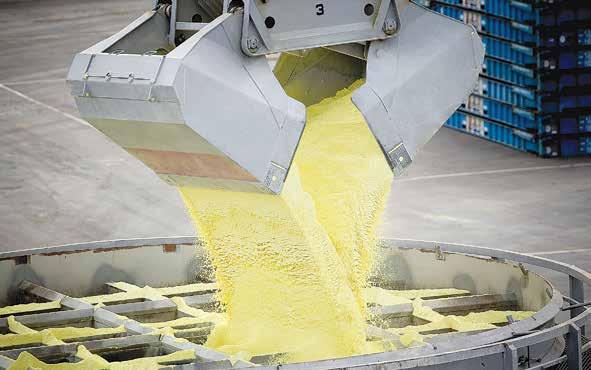
experiencing negative margins.
RABOBANK SAYS that the economic downturn that New Zealand is cur-

rently experiencing will prove sufficient to bend home-grown inflation back down to sustainable levels.
Consequently, the bank still believes that
the RBNZ will be cutting rates this year. Its current forecast is for the first cut to arrive in August, with a followup cut in November.
“We’re holding to this
timing for now, but the strong tradeable inflation number does introduce a risk that August might be too optimistic and the RBNZ will be forced to hold fire for longer.”

IF EVER there was a need to look at rural bank lending, then this is it.
Federated Farmers’ 30-page submission to the primary production select committee last week makes a compelling case for an immediate independent inquiry into rural bank lending. There’s clearly disparity between rural and urban bank lending practices.
What’s shocking is that changes made to Reserve Bank (RBNZ) rules would cost farmers more than He Waka Eke Noa (HWEN), the abandoned primary industry partnership to reduce emissions.
Feds refer to a briefing to the previous Minister of Finance where it is noted banks claimed the changes to RBNZ rules would result in a 0.5% and 1.2% increase in interest rates. To put a 0.5% to 1.2% increase in rural lending costs in context, with total rural lending of approximately $62 billion, this equates to an additional cost of $310 million to $720 million per annum of interest costs. HWEN policy was forecast to levy $220 to $290 million from the sector by 2030.
Rising interest rates combined with high inflation are putting many farmers under huge financial pressure. Some are even being forced out of the industry.
The primary production select committee is investigating rural banking. While this is a good start, what farmers need is a full-scale inquiry undertaken by MPs.
A survey the Feds did of farmers in May last year found farmer satisfaction with their banks was at an all-time low, and the number of farmers reporting they had come under undue pressure from their bank is at an alltime high.
The Commerce Commission has begun a market study on personal banking. Frustratingly, however, rural lending is outside the scope of the Commission study.
It’s time for politicians to give rural businesses and rural families some certainty about the fairness of the interest rates they’re paying and the services that they’re getting.
An independent rural banking inquiry is the way to go.
HEAD OFFICE POSTAL ADDRESS:
PO Box 331100, Takapuna, Auckland 0740
Phone 09-307 0399
PUBLISHER: Brian Hight Ph 09 307 0399
GENERAL MANAGER: Adam Fricker Ph 021-842 226
EDITOR: Sudesh Kissun Ph 021-963 177 sudeshk@ruralnews.co.nz

“What they don’t tell you is, it only works if you’re hooked up for electricity!”
SEVEN OF the UK’s major supermarket chains have now responded to the call for them to back the nation’s farmers by adding ‘buy British’ tabs to their websites. Tesco is the latest to join the campaign, which the National Farmers Union have been pushing for. The move follows an open letter written by Conservative MP Dr Luke Evans to the CEOs of eight major supermarkets, asking for a filter which would direct online shoppers to home-grown food to help “boost the economy and cut the UK’s carbon footprint”. The letter was co-signed by 126 crossparty MPs, none of whom seem to realise that UK produce is likely to have a higher carbon footprint than food imports, such as NZ lamb, which Lincoln University has proved can be shipped around the world and landed in the UK with a lower carbon footprint than the local product!

GOOD ON the UK’s NFU for battling to get supermarkets to prioritise local farmers’ produce. But your old mate reckons they might need to put the same effort into getting UK lawmakers to take their jackboots off farmers’ necks. Food security is a sore point in the UK, as a direct result of its National Food Strategy, proof positive that government meddling in farming practices is a terrible idea! Farmers are paid incentives to take land out of production, reduce livestock numbers and plant non-food carbon-fixing crops. The result is a massive drop in local food production in the UK, driving up food prices, demand for imports and reducing UK food security. If the NFU’s ‘Buy British’ campaign proves too successful, half the UK will starve!
PRODUCTION: David Ferguson Ph 027 272 5372 davef@ruralnews.co.nz
Becky Williams Ph 021 100 4381 beckyw@ruralnews.co.nz
REPORTERS: Peter Burke Ph 021 224 2184 peterb@ruralnews.co.nz
Nigel Malthus Ph 021-164 4258
MACHINERY EDITOR: Mark Daniel Ph 021 906 723 markd@ruralnews.co.nz
GOOD NEWS for hunters as Forest & Bird have “paused” legal action against the Fiordland Wapiti Foundation and agreed conservation work can continue without the extermination of wapiti. The legal action was an own goal in the first place. For 13 years, DOC worked with the Foundation, letting hunters pay for ballot access to hunt this prized species, providing population management of an introduced species for free. So could this signal a change in attitude from the normally litigious F&B? We can only hope, but the Hound isn’t holding his breath. F&B have taken legal action against government numerous times: opposing amendments to consenting pathways for wetlands; suing over fisheries catch limits; blocking mining initiatives. Let’s hope the sensible decision over Wapiti will hold and F&B will keep their well-paid lawyers on a leash for once.
AUCKLAND SALES CONTACT: Stephen Pollard Ph 021 963 166 stephenp@ruralnews.co.nz
WAIKATO & WELLINGTON SALES
CONTACT: Lisa Wise Ph 027 369 9218 lisaw@ruralnews.co.nz
Want to share your opinion or gossip with the Hound? Send your emails to: hound@ruralnews.co.nz
THE WATERMELON party (AKA the Greens) try to portray themselves as an upright, self-righteous, caring bunch of woke, bicycle-riding socialists, free of even the smallest venial sin. But once again they’ve shown that they are anything but that with Julie-Anne Genter’s bizarre outburst of crossing the floor of Parliament and yelling and threatening another politician. Very occasionally politicians cross the floor of the house to support an opposition party on some matter of principle – not to start a fight. ‘JAG’ has given new meaning to the term ‘crossing the floor’. Inappropriate behaviour now seems endemic in the Greens. Think allegations of shoplifting, benefit fraud, migrant exploitation, bullying and some intemperate squawking by the co-leaders. All far from the true Green Party founded by Jeanette Fitzsimons and Rod Donald which had real mana. They must be turning in their graves.
SOUTH ISLAND SALES CONTACT: Kaye Sutherland Ph 021 221 1994 kayes@ruralnews.co.nz
DIGITAL STRATEGIST: Jessica Marshall Ph 021 0232 6446


With the copper network being phased out within the decade, New Zealand needs a long-term approach to ensure rural Kiwis aren’t left behind when it comes to connectivity. Anna Mitchell, executive general manager of Fibre Frontier at Chorus, explains the potential of the right connectivity for the rural sector.
IN TODAY’S world, connectivity has shifted from a convenience to a necessity – with increasing expectations across government, business, and consumers that everyone is able to transact, work, and engage online.
Kiwis seek fast, reliable internet access more than ever, whether it’s for streaming entertainment, joining a meeting from home, or participating in online classes.
For rural communities, connectivity is even more critical in enabling people to access education, healthcare and economic opportunities.
NZIER research has shown that providing rural consumers with the equivalent high capacity (i.e. fibre) broadband as urban New Zealanders could result in a staggering $16.5 billion in economic benefits to the rural economy over the next 10 years. This equates to $6,500 per
household per year. The impact of investing in this infrastructure is significant considering the Government’s ambition to double the value of our export earnings, as well as the increasing ‘digital expectations’ on our rural communities and businesses to transact and access a range of services online.
Despite these facts however, rural New Zealand is at risk of being left behind. There is a lack of a co-ordinated long-term plan for the country’s rural connectivity infrastructure as we are set to phase out the copper network in the next decade.
While the copper network served us well in the past, it doesn’t provide the capacity, speed and reliability Kiwis want today. That’s why in areas where fibre is available, we have been retiring copper since 2021 and why we are seeing a dramatic decline in copper
connections even in areas where fibre isn’t available.
Nearly two thirds of rural New Zealanders now get their internet and voice services on a technology that isn’t copper, and many telecommunication service providers are no longer selling copper services. At its height, the copper network provided connectivity to about 1.7m households, it is now only serving around 10% of this number and continuing to fall. With many urban households and businesses switching to fibre, and in rural to other alternatives like satellite and wireless broadband, it is no longer sustainable or suitable to run the copper network.
Alternative services like fixed wireless and satellite are now better able to meet connectivity needs compared to copper, for example those provided by wireless internet service providers

(WISPs), mobile network operators, and providers like Starlink. However, it is fair to say none of these provide the capability, quality, and reliability of fibre.
Emphasising this commitment to high-capacity connectivity earlier this year we announced that Chorus was investing $40m outside of any government programme to take fibre to an additional 10,000 households and businesses across 59 communities across the country.
While this has enabled those 10,000 households to effectively win the ‘broadband lottery’, we believe there



needs to be a long-term plan for ensuring that all New Zealanders are able to access the connectivity infrastructure they will need into the future.
Huge gains have been made through a succession of rural broadband programmes to improve rural connectivity, however a significant digital divide remains and will continue to grow without
a clear long-term plan, despite around $800m being spent so far by government.
As a country, it’s worth considering what our expectations are for how far the fibre network should reach, where we expect wireless and satellite to become the default technology, and how we should align our regulatory and investment incentives to achieve this.
At the TUANZ Rural Connectivity Symposium last week, the message was clear that we needed to be thinking more long term, and how critical a clear plan across government, industry, and most importantly, rural communities is to ensuring that all New Zealanders will have the services they need to thrive in the future.
We proposed an ambitious vision of fibre to 95% of New Zealanders over the next decade, which would cost





between $200m-$250m per year over ten years and close the rural/ urban divide by nearly two thirds. Others will no doubt have their own solutions and proposals.
As the Government looks to set its infrastructure priorities, it is important that connectivity continues to be a focus.
We know the copper network is not the answer. And we can’t risk a growing digital divide as that is in no one’s interest. That’s why as we retire the network that has served us well for the last forty years, it’s time to think about what the next forty will bring. There is so much potential in our rural economy waiting to be unlocked with the right connectivity. But we need to have a plan. Chorus is committed to being part of that conversation – and it’s time to get started.



PEOPLE ARE starting to question the viability of sheep and beef farming as profitability in that sector falls to one of its all-time lows, according to Federated Farmers board member and Gisborne sheep and beef farm, Toby Williams.
He’s heard that even some of the better farmers in his district are far from optimistic about the future of the sector and saying they may be better selling up and moving to town.
He says when it comes to succession planning for future generations, farmers are worried about passing on debt or have fears that they may even fail to make the business profitable in the future.
Williams compares the state of sheep and

beef farming now to what it was like in the 1980s when massive change took place.
“In the ‘80s we had


the ability to make our farms a lot more efficient. We went from 90% lambing to 130% over 20 years, but today we don’t have the opportunity to go from 130% to 160%, so we need to find ways on-farm of being more efficient,” he told Rural News.
He says for him, apart from interest payments, labour is his biggest bill, so he’s tried to cut his labour costs – not by cutting staff wages, but by
taking less money out himself.
He says as a business owner he triages what needs to be paid and number one is the bank, because if he doesn’t pay them he may lose the farm.
Paying staff is number two on his list and while there might be an option to cut staff and save money in the short term, repairs and maintenance will not get done so long term the bill will
be higher. The third priority is animal health and welfare and that includes shearing, even though wool returns are but low.
“You must focus on the big things and put off spending on other things. Fertiliser is out the window: nice to have and in many cases a need to have. But paying the bank is more important than putting fertiliser on and you can survive for a short time by doing this,” he says.

TOBY WILLIAMS says sheep and beef farmers must look at diversification options, which may be easier for some than others.
He says for those in the Horowhenua, Waikato and Canterbury, dairy support may be an alternative to sheep farming.
A move towards changing the mix to more cattle has been talked about but this has pros and cons and the talk is that there will not be a huge move in this direction. Williams says beef is a good option because of its versatility – especially in the hamburger market and with growing demand for beef in Asia.
Technology is being talked up as a pathway to greater efficiency on farms and NZ farmers have a proud history of being early adopters of this. But as Williams and other farming leaders have pointed out, technology should only be invested in if it produces tangible benefits and fits with the nature of the property.
Tailor-made for the 60 plus traveller
Great Britain & Ireland
Jul 14, 2024, 30 Days
Join our timeless adventure across Great Britain and Ireland.
A tapestry of incredible destinations and breathtaking experiences. From London's Royal pageantry and a dazzling West End show, to the historic streets of Oxford and the enigma that is Stonehenge. Journey through the Cornish Peninsula, Cardiff and Waterford and embrace the legend of the Blarney Stone in Killarney. The incredible Ring of Kerry, the dramatic Cliffs of Moher, the rich history of Belfast, the Giant's Causeway. Explore ancient Chester and experience Liverpool. Cruise Lake Windermere, tour Glasgow and visit the Fully Escorted Tours

Drones for use in mustering is a classic example of this and one that would be a waste of time and money, he says.
“It might be okay in, say, the Wairarapa, but here in Whangara, we have blind country and huge paddocks, so mustering with a drone would not work for me. Anyway, why would I want to be out mustering with a drone when I can go out there with my dogs? That’s a cool part of this job,” he says.

Don’t put good fertiliser on compacted soil which can’t absorb it. If your soil can’t support 15cm root growth and good worm population check for compaction. You could need aeration. In dollar terms, what would 20% production increase mean to your yearly turnover?

YOUR GREATEST ASSET IS THE SOIL YOU FARM. DON’T DESTROY IT!


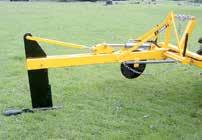

Williams also points out that by mustering on foot, you get a feel for what’s going on with the land and the stock and instantly pick up things such a worm challenge or the state of the covers. He says technology can help, but there is also a need for intuitiveness on the part of a farmer to pick up little things technology wouldn’t.
“We need to be able to look at the grass and determine whether it is over grazed or under grazed. In which case do I need to bring some cows in to tidy it up or look at other things such as a weed challenge and what to do about this,” he says.
Finally, Williams says more needs to be done to get young people into farming. He says there is a need to change the perception that still exists that farming is for ‘the dumb kids’. This, he says is so far from the truth because farming is a large and complex business and requires some high-level skills.
He says it’s great to see more young females entering farming and they should be encouraged in their career choice. Williams says farmers of today need to listen to what young people aspire to in terms of farming and encourage them to meet these aspirations.
“We need to have an open mindset and encourage them to do things differently, just like our parents allowed us to do,” he says.
THE CHAIR of the largest Māori kiwifruit growing operation in NZ, Ratahi Cross, says his organisation is on the mend a year on from its Hawke’s Bay operation being severely damaged by Cyclone Gabrielle.
Cross who chairs the Ngai Tukairangi Trust says it’s been a very good season and while they are not out of the woods they are recovering well and are optimistic about their future.
Ngai Tukairangi has four kiwifruit and five apple orchards in Hawke’s Bay as well as orchards in Northland, the Bay of Plenty, Te Puke and Tairawhiti. While there was damage to the orchards in Tairawhiti, it was the kiwifruit ones in the BOP that suffered the most.
The apple orchards in Hawke’s Bay suffered minimal damage. Hawke’s Bay makes up about 48% of Ngai Tukairangi’s total operations.
Cross says Cyclone Gabrielle cost the Trust around $25 million in lost production, but this loss was compounded by the fact that before the cyclone struck, land values plummeted by around 11% which affected their ability to repay debt. He says they use land values to leverage up the business.


Now more than a year on from the cyclone, the Ngai Tukairangi kiwifruit orchards in Hawke’s Bay

have produced a good crop of fruit, although the actual yield is about 75% of what it would normally
• Ideal for Cattle Troughs
• High Flow
• Side/Bottom Mount
• Detach to Clean
be expected. But while the yield was low, Cross says there was a silver lining.
RATAHI CROSS says their apple orchards in Hawke’s Bay have produced stunning crops, but says the challenge is with the sale of the fruit due to the Ukraine war and other geopolitical events.
He says there is a degree of sluggishness in the market and while people clearly want to buy the fruit, poor economic conditions are making it that much harder.
“I will be happy if we just break even with apples. We have to break even or better because we can’t afford even a minor setback,” he says.
“There is period right at the beginning of the season – they call it ‘early start fruit’ and you get a premium on that. Nearly 100% of our Hawke’s Bay fruit got into that category and although we didn’t have the volumes, we had the ability to get the fruit to the market
early, which gave us the early start premium – in other words, extra dollars,” he says
This means they have ticked the box in earnings, at the same time spending a lot of their cash reserves on muchneeded repair work while waiting for considerable
government assistance. He says coincidently Ngai Tukairangi just got a $12 million loan from the Government via the Kanoa fund.
“This is absolutely needed and amazing and will be used to redevelop some of our orchards, like the one at Puketapu west of Hastings. Some of that money will be used to offset money we have already spent in getting our orchards back into operation,” he says.
Cross says the damaged infrastructure at Puketapu has been repaired and is now ready for new vines to be replanted.
He says they feel like they are on the mend and are very optimistic about their futures despite the traumas of Cyclone Gabrielle.
He says as well as feeling better about their future as an organisation, they are also feeling better for their staff because they are the engine room of the business.
He says if they can reassure staff about their prospects and future that will bode well for the continued recovery.
“I’d like to think we are out of the deep end and swimming in the shallows, getting out of the pool of depression and the overwhelming pressure that comes with a business that has just been smashed,” he says.


• Compact/Robust


• Up to 50mm Inlet
• Flows up to 600L/min
• For Storage Tanks
• Easy Access to Valve
• Inlets Upto 50mm
• Avoids Starting & Stopping of Pump When Tank is Filling


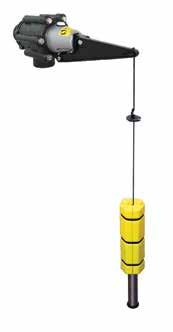
AN ELITE Holstein Friesian bull, Farside M Illustrious S3F, has been inducted into the “Hall of Fame”, an honour exclusively reserved for animals that have delivered a significant contribution to the dairy industry.
The accolade took place at LIC’s annual Breeders’ Day event, where the country’s top bull breeders convened to celebrate their contributions to the dairy industry.
LIC livestock selection manager Simon Worth says Illustrious has well and truly lived up to his name.
“Illustrious’ career as an artificial breeding bull has been full of achievements that have extended far beyond his retirement. His ability to help farmers breed outstanding cows that are efficient milk producers with quality udders makes him a standout.”
Illustrious sired a total of 17,313 daughters and over 90,000 granddaughters across New Zealand following his three seasons in LIC’s Premier Sires bull team (20112014). He also sired 33 sons that have been used for artificial breeding, with nine of these bulls following in their father’s footsteps by joining a Premier Sires team.
Worth says Illustrious was predicted to be a star performer as a young bull.
“Based on his DNA and ancestry, Illustrious ranked number one for genetic merit compared

• Born in 2010.
to his Holstein Friesian peers.
“Fast forward to today, that prediction was spot-on, as Illustrious is recognised as the highest production bull used in the artificial breeding industry that year (2011),” says Worth. Worth credits the bull’s impressive parentage for his achievements.
• Sired by Fairmont Mint-Edition – 105038 (a 2015 Hall of Fame Inductee, and sire of 2021 inductee San Ray FM Beamer-ET S2F and 2022 inductee Priests Sierra).
• Debuted in the Premier Sires team in 2011.
• 17,313 daughters, and 90,620 paternal grand- daughters.
• 33 sons used for the artificial breeding (AB) industry.
• Current gBW 358/99 (April 2024).
• 60th inductee into the Hall of Fame, 27th Holstein Friesian bull inductee.
“Take a super cow family, combine it with another Hall of Fame legend in the form of Fairmont Mint-Edition, and you can see how a special recipe was created.
“It’s great to see that
his daughters and sons have continued his legacy for him many years beyond his retirement, and it’s for this reason he is being recognised as the 60th animal to enter the Hall of Fame.”
This honour is shared with his breeders, Graeme and Jacki Barr from Tokoroa.
For Graeme and Jacki
that this cow family are known for good temperament and are easy to interact with, therefore, it was no surprise to Graeme that Illustrious was too.
“I remember the Breeders’ Day we attended when Illustrious was in a Premier Sires team, one of the LIC team told me he had a great personality and was the easiest bull to work with.”
Alongside Illustrious’ induction into the Hall of Fame, this year’s Breeders’ Day event also saw KiwiCross bull, Julian Tu-Meke, getting a special shout-out as the farm team’s favourite bull.
Tu-Meke is part of LIC’s KiwiCross sexed team, which farm-
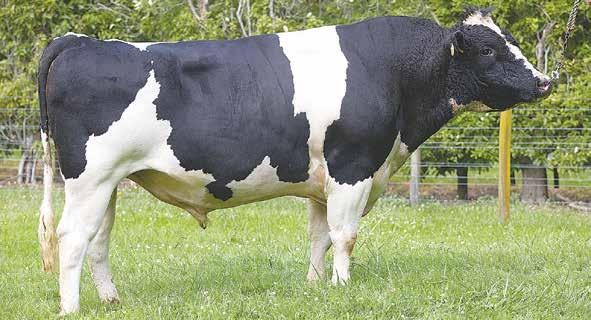
this is the first time they have had a bull inducted into the prestigious Hall of Fame. They say they are surprised by his induction but are equally delighted.
“We knew he was a good bull. He did well in the LIC breeding programmes and in both the national and international market,” says Graeme.
“Illustrious is from
one of my best cow families, his mum, known as number eight cow, had fantastic longevity, a superb udder, and always produced well.”
Graeme highlighted
ers can use to get more heifer replacements from their best cows and was selected for the award due to his good nature and readiness to work in the collection barn.


CARRFIELDS HAS launched a new partnership with Waikato-based Piako Tractors, where the latter will become the exclusive retailer and service provider of the German Horsch brand throughout the upper North Island.
Greg Carr, founding director of Carrfields, said, “We are delighted to partner with Piako Tractors, which will step up our Horsch sales and service capability across the upper North Island. Partnering with Piako will enable us to offer a more
comprehensive level of customer service and product support quickly in the region.”
Both parties are currently working on establishing a regional service network for Horsch customers; with Piako handling machinery sales, parts, servicing, and onthe-ground customer assistance, with Carrfields providing technical support.
Darrell Russell, dealer principal of Piako Tractors, said their five branch locations can provide a comprehensive level of customer and product support from the Waikato to Northland.

“In representing many leading brands, including Horsch, we’ve built an enviable reputation for
supplying and supporting a premium range of brands and products that deliver significant opera-
ACCORDING TO numbers sourced from national authorities, 151,800 tractors were registered across Europe in 2023, of which 26,200 tractors (17%) were 37kW (50 hp) and under and 131,900 (83%) were 38kW and above.
Agricultural tractor registrations were 4.9% lower than in 2022, but were only slightly below the average number registered in the last five years. The number of machines registered in the first half of the year was only marginally lower than in the same period the year before. Between July and December 2023, nearly 10% fewer tractors were registered than in the equivalent period of 2022.
a strong reputation for customer ser-

It appears that the first half of 2023 saw manufacturers catching up with the backlog of orders built up during 2021 and 2022 because of Covid-19 disruptions to global supply chains and the Russian invasion of Ukraine. By the middle of the year, supply chains had largely returned to normal, so the second half gave a better indicator of real demand.
Demand for tractors is closely linked to farm incomes, but since the summer of 2022, global food supply chains have adjusted to the new situation and food prices have come down steadily. By the end of 2023,
vice, which, along with its family ownership, creates many synergies with Carrfields,” said Greg Carr.
world food prices, as measured by the UN’s Food & Agriculture Organisation, were down by more than a quarter, compared with the peak in March 2022.
The drop in prices for agricultural commodities has come at a time when input costs remain high, particularly for animal feed, fertiliser, fuel and energy which were exceptionally high during 2022.
Not all countries recorded declines, with the two largest markets of Germany and France both recording small increases, to deliver a combined share of European registrations of 41%.
In contrast, registrations were lower in Italy, Poland, Spain and Austria.
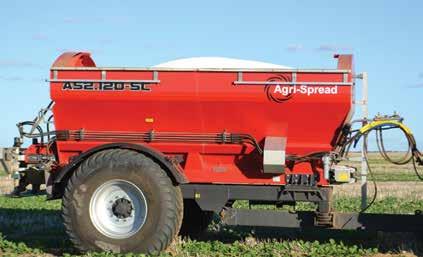
“Their focus on customer service is closely aligned with our own culture of building long-term customer relationships and providing face-to-face product support. We are very pleased to share a similar philosophy of partnering with customers for the long term and providing the support they need to build a successful farming enterprise. We look forward to working closely with them to continue to develop the Horsch brand and its products for the benefit of our customers.”
In Germany, tractor registrations in 2023 were 28,881 units, while France rose to 36,396 units, the highest level since 2014. Italy’s market dropped by around 13%, mainly in the 57-130kW sector.
In the United Kingdom, the total number of agricultural tractors registered in 2023 was 2% higher than the year before, while in Spain a severe drought saw a fall in registrations of 18%. Elsewhere, Poland hit 10,300 units (-12%), Belgium recorded 2788 units (-8%) and the Netherlands 2662 units, up 6% on 2022. Bucking the trend, Turkey registered 77,901 tractors, an increase of 16% over 2022, and 54% higher than the average for the 2018-2022 period. – Mark Daniel


CASE IH’S introduction of AFS Connect, an option for its high horsepower tractor ranges, has now been rolled out across its popular Puma models.
The AFS Connect Puma, now available in the Australian and New Zealand markets, features a range of new design features and performance updates, including the connectivity capabilities of its larger Steiger, Magnum and Optum siblings.
The new AFS Connect Puma models will also come with continuously variable transmission (CVT) as standard, and the addition of a new 260 horsepower model to the range, that previously stopped at 240hp. In addition, there
are also bigger rear tyres, a stronger front axle, and a bigger rear axle on the higher horsepower models.
The Case IH AFS Connect telematics package allows instant two-way data transfer between the tractor and the AFS Connect online management portal, giving owners and farm managers complete control over their farm, fleet and data management.
Tractor performance and implement operating data is immediately, securely and continuously sent to the online portal for monitoring by the owner and/or operator.
“This allows users to make management decisions more precisely and with greater speed, supported by instantly accessible and accurate data, both current and

historical. There is also the ability to monitor real-time information such as the location of the tractor, its fuel levels and other key management and
Lawrence Polga, Case IH Australia/New Zealand product manager for Puma tractors.
Owners can also allow their Case IH dealer to
remotely monitor their tractor’s AFS Pro 1200 terminal screen via AFS Connect, providing the opportunity for dealer notification of early warning signs of
a tractor issue, remote service access, and operating advice based on machine data, minimising downtime, while also allowing seamless upgrades of operating software or product enhancements.
A new larger cab features a premium leather seat with active suspension features and full cooling and heating capabilities. A new drive pedal provides enhanced precision and control for slow-speed inching, field work with headland turns, and highspeed travel on the road. Further detail includes increased storage, a larger cool-box and multiple USB sockets.
A new hydraulic cab suspension will be introduced for increased comfort, while the introduction of an ‘advanced vehicle
suspension’ (AVS) option will fully integrate frontaxle suspension, cab suspension and rear hitch damping to provide the operator with a higher level of driving comfort.
Elsewhere in the cab, there is a multi-controller armrest and its multifunction lever, a larger AFS Pro 1200 touchscreen monitor with greater functionality, and A-pillar tablet instrumentation for engine/transmission information read-outs. Via the new monitor at the front of the armrest, key controls on can be customised to suit the operator and the job at hand.
A new fuel tank offers an increased capacity of 457 litres, ergonomic steps offer easier access, and a storage box on top, and at the bottom, in front of the steps, acts as a dedicated storage area.






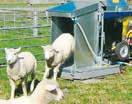













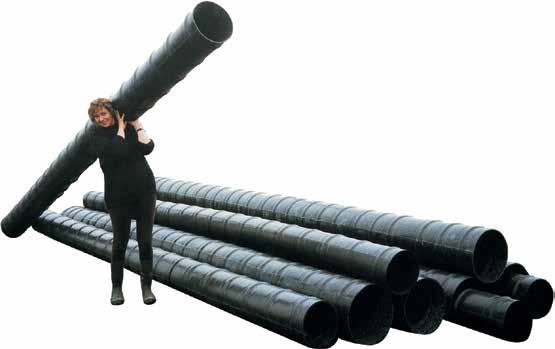





with their Focus Line machinery range for Viticulture and Horticulture sectors.


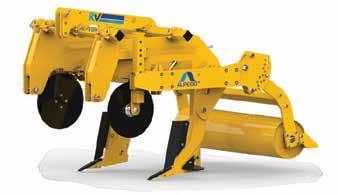

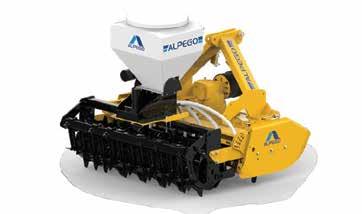
KAITAIA Kaitaia Tractors 09 408 0670
WHANGAREI Piako Tractors Northland 09 438 1319
SILVERDALE Brandt NZ 09 427 9137
PUKEKOHE Brandt NZ 09 237 0043
MORRINSVILLE Piako Tractors 07 889 7055
MATAMATA Matamata Tractors & Machinery (07) 888 6292
HAMILTON Brandt NZ 07 847 0425
CAMBRIDGE Brandt NZ 07 827 5184
ROTORUA Piako Tractors Ltd 07 345 8560
TAUPO Taupo Tractors & Machinery 07 378 4533
STRATFORD FieldTorque Taranaki 06 765 8643
HASTINGS Stevenson and Taylor 0800 4273 2273
WAIPUKURAU Stevenson and Taylor 06 858 6041
DANNEVIRKE Lancaster Tractors 06 374 7731
PALMERSTON NORTH Transag Centre 06 354 7164
MASTERTON Brandt NZ 06 377 3009
NELSON Drummond & Etheridge 03 543 8041
BLENHEIM Drummond & Etheridge 03 579 1111
KAIKOURA Drummond & Etheridge 03 319 7119
GREYMOUTH Drummond & Etheridge 03 768 5116
CHRISTCHURCH Drummond & Etheridge 03 349 4883
ASHBURTON Drummond & Etheridge 03 307 9911
TIMARU Drummond & Etheridge 03 687 4005
OAMARU Drummond & Etheridge 03 437 1111
MOSGIEL JJ Limited 03 489 8199
GORE JJ Limited 03 208 9370
INVERCARGILL JJ Limited 03 211 0013